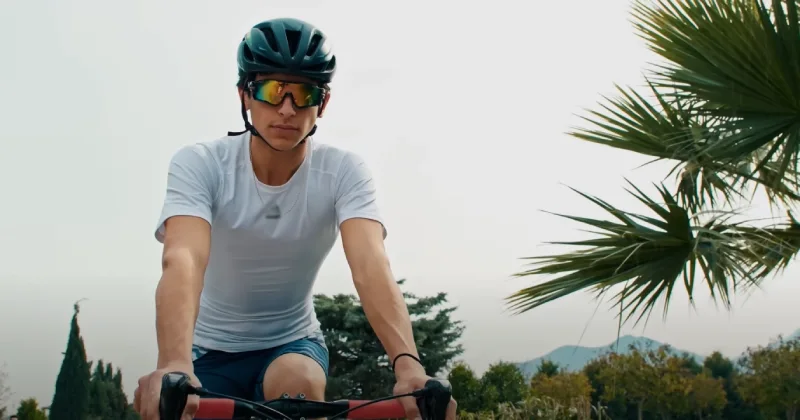A urethral stricture, characterized by scarring that constricts the urethra – the tube responsible for urine passage, leads to reduced urine flow from the bladder. This condition can trigger urinary tract complications, including infections.
Cycling can harm the urethra through prolonged pressure and repetitive movements, causing numbness, tingling, and infection risks.
The pressure and movement can impact urethral blood flow, raise chances of narrowing, introduce bacteria, and lead to kidney infections. Urethral injuries can happen during bike riding, underscoring the need for precautions and awareness.
In this Blog post, We will explore 7 effects of cycling on the urethra, 10 potential risk and The 14 best ways to prevent urethral damage while cycling.
Can Cycling Damage Your Urethra: 7 Effects

extended periods on a bicycle can sometimes impact certain parts of the body adversely, including the urethra. This article will delve into how cycling affects the urethra, detailing specific ways it can impact urethral health and common symptoms cyclists might experience.
Specific Ways Cycling Can Impact Urethral Health
Cycling can affect the urethra primarily due to pressure applied to the area between the anus and the genitals. Here are some specific ways this can occur:
- Pressure on the Perineum: The design of traditional bike seats can place significant pressure on the perineum, compressing the urethra and leading to discomfort or irritation.
- Reduced Blood Flow: Extended periods of cycling reduce pelvic blood flow, which may contribute to urethral issues over time.
- Repetitive Motion: The constant pedaling motion can cause friction in the urethral area, particularly if the rider is not wearing appropriate cycling shorts.
Common Symptoms Cyclists Might Experience
Understanding the symptoms can help in early identification and management of any urethral issues caused by cycling. Some of the common symptoms include:
- Urethral Pain: Cyclists may experience sharp or dull pain in the urethral area, especially after long rides.
- Urinary Discomfort: Symptoms like burning sensation while urinating, frequent urination, or difficulty starting urination can be indicative of urethral irritation.
- Swelling or Redness: Persistent pressure and friction can lead to swelling or redness around the perineal and urethral areas.
- Numbness: Some cyclists report a numb feeling in the genital area due to prolonged pressure on the nerves in the perineum.
Cycling And Your Urethra: 10 Potential Risks
Like any physical activity, cycling has its potential drawbacks. A common concern is the risk of urethral damage associated with cycling. While the topic may evoke discomfort, it’s vital for all cycling enthusiasts to confront and understand.
How Different Types of Bike Seats Contribute to Urethral Pressure
The design and type of bike seat play a significant role in determining the pressure exerted on the perineum and urethra. Here are some key factors:
- Narrow Saddles: These tend to put more pressure on the perineum, increasing the risk of urethral compression and discomfort.
- Wide Saddles: While they may distribute weight more evenly, poorly designed wide saddles can still exert considerable pressure on the soft tissues if not ergonomically shaped.
- Cut-Out Saddles: These feature a hole or groove in the center designed to reduce perineal pressure. It depends on the rider’s anatomy and saddle fit.
- Gel-Padded Saddles: These offer additional cushioning, which may alleviate some pressure but can also lead to increased friction and heat build-up, potentially irritating the urethra.
The Role of Riding Position in Urethral Discomfort

Riding position is another crucial factor influencing urethral health. Let’s look at how different positions can affect comfort and pressure distribution:
- Forward-Leaning Position: This position can exacerbate pressure on the perineum and urethra, particularly if the handlebars are set too low relative to the saddle.
- Upright Position: Offering a more relaxed posture, this position reduces pressure on the perineum but may not be viable for all types of cycling, especially competitive or endurance riding.
- Handlebar Height and Reach: Proper adjustment of handlebar height and reach can help ensure that weight is distributed more evenly, reducing undue pressure on the urethral area.
Influence of Ride Duration and Frequency on Urethral Health
The duration and frequency of your rides can also impact urethral health. Here’s how:
- Long Rides: Extended periods on the saddle can lead to sustained pressure on the urethra, increasing the likelihood of discomfort and potential injury.
- Frequent Rides: Regular cycling without adequate rest can prevent the perineum from recovering, compounding any irritation or damage over time.
- Break Intervals: During long trips, regular rest can help alleviate pressure and restore blood flow to the perineal area.
Mitigating these risk factors involves selecting the right saddle, maintaining an ergonomic riding position, and managing ride duration and frequency wisely. By doing so, cyclists can enjoy their activity while minimizing the risk of urethral damage.
Urethra Damage While Cycling: 14 Preventing Measure
While cycling can pose risks to urethral health, there are several preventative measures that cyclists can take to minimize these risks and safeguard their comfort and wellbeing. IThis section emphasizes the importance of proper bike fitting, padding, breaks during rides, hygiene practices, optimal riding positions for reduced strain, and handlebar adjustments for improved ergonomics.
Proper Bike Fitting
Proper bike fitting is crucial for minimizing pressure on the urethra and ensuring overall comfort. Key aspects of a good bike fit include:
- Saddle Height: Ensure the saddle is at the correct height so that there is just a slight bend in the knees during pedal stroke.
- Saddle Position: Adjust the saddle to be level or slightly tilted forward in order to reduce perineal pressure.
- Reach and Handlebar Height: Ensure the reach to the handlebars is comfortable and does not force the rider into an overly aggressive, forward-leaning position.
Padding and Specialized Shorts for Extra Cushioning
Using appropriate padding and specialized cycling shorts can significantly reduce discomfort and protect the urethra. Consider the following:
- Padded Shorts: Invest in high-quality cycling shorts with adequate padding (chamois) to cushion the perineal area.
- Gel Seat Covers: For additional cushioning, consider using a gel seat cover over the bike saddle.
- Proper Fit: Ensure that cycling shorts fit properly to prevent blood flow being restricted, or too loose, which can cause chafing.
Taking Regular Breaks During Long Rides

When riding for long periods of time, it is helpful to take frequent breaks to alleviate stress and maintain blood flow. Here tips for incorporating breaks include:
- Frequent Stops: Plan stops every 30-60 minutes to stand up, stretch, and relieve pressure from the saddle.
- Dismounting: Get off the bike entirely if possible to give the perineal area a break.
- Standing Pedaling: Occasionally stand up while pedaling to shift weight distribution and relieve pressure.
Proper Hygiene Practices for Preventing Urethral Issues
It is imperative to maintain proper hygiene in order to avoid infections and other urethral issues associated with cycling. Recommended practices include:
- Clean Gear: Always wear clean, dry cycling shorts to minimize the risk of bacterial infections.
- Post-Ride Hygiene: Shower promptly after rides to wash away sweat and bacteria.
- Breathable Fabrics: Choose moisture-wicking fabrics that allow the skin to breathe and stay dry.
Optimal Riding Positions to Reduce Urethral Strain
Adopting an optimal riding position can significantly reduce urethral strain. Key points to consider include:
- Neutral Spine: Maintain a neutral spine position to distribute weight evenly and reduce perineal pressure.
- Balanced Weight Distribution: Ensure your weight is distributed between the saddle and the handlebars, avoiding excessive pressure on any one area.
Saddle Selection For Urethral Health: 14 Tips
Selecting the appropriate saddle is crucial for protecting urethral health while cycling. The right saddle can help distribute weight evenly, relieve pressure on delicate areas, and improve riding comfort. In this section, we will compare various saddle designs and their impact on urethral pressure, and offer advice on choosing the right saddle.
Urethral pressure and saddle designs comparison
Different saddle designs can have varying effects on urethral pressure. It is important to understand these differences in order to make an informed choice:
- Traditional Narrow Saddles: Typically favored by competitive cyclists, these saddles can concentrate pressure on the perineal area, potentially causing discomfort and urethral issues.
- Wide Saddles: Designed for leisure and commuter cyclists, wide saddles distribute weight more evenly across the sit bones but may still cause pressure on soft tissues if not ergonomically designed.
- Cut-Out Saddles: Featuring a groove or hole in the center, these saddles reduce blood flow to the cervix and urethra. Their effectiveness can vary, making proper fit essential.
- Noseless Saddles: These saddles eliminate the nose portion to significantly reduce perineal pressure. They can be beneficial for some riders but may require an adjustment period.
- Gel-Padded Saddles: Offering additional cushioning, gel-padded saddles can alleviate some pressure but may increase friction and heat build-up, which could irritate the urethra.
Your Body Type and Saddle Fit
Choosing the right saddle involves understanding your body type and riding style. Here are some tips to help you find the perfect fit:
- Width of Sit Bone: Take measurements to ensure the saddle supports your skeletal structure rather than pressing on soft tissues. Many bike shops offer sit bone measurement services.
- Riding Style: Consider your riding style—competitive, leisure, or commuter—as it influences the type of saddle that will be most comfortable.
- Competitive Riders: Might prefer narrow, performance-oriented saddles.
- Leisure Riders: Often benefit from wider, more cushioned saddles.
- Commuter Riders: May need a balance between comfort and efficiency.
- Saddle Shape: The shape of the saddle should complement your pelvis structure. Test different shapes to find one that aligns with your anatomy.
- Padding Level: Opt for a saddle with adequate padding to provide comfort without causing excessive friction. A balance is key.
- Test Rides: Take advantage of test ride programs offered by many bike shops. Testing different saddles can help you identify which one feels best during actual riding conditions.
- Adjustability: Ensure that the saddle allows for adjustments in tilt, height, and fore-aft position to fine-tune your fit and reduce pressure on the urethra.
Bicyclists can choose a saddle that protects urethral health and enhances overall riding comfort by comparing various saddle designs.
Conclusion
As we come to the end of our journey through cycling and urethral health, let’s recap the key points. Cycling does affect urethral health. Factors like saddle types, riding positions, and cycling frequency play a role.
To ensure a comfortable cycling experience, take a proactive approach with a well-fitted bike, padded shorts, and good hygiene. Gear up, start pedaling, and enjoy the ride while prioritizing optimal urethral health.
FAQs
Can Cycling Cause Pain In My Pee?
Yes, cycling can cause pain in your pee. Excessive pressure can damage the urethra, leading to symptoms like burning or stinging during urination and, in severe cases, blood in the urine. If experiencing these symptoms, seek medical advice promptly.
Is Cycling Harmful To The Perineum?
Around 91% of cyclists reported perineal numbness, with a notable 13% incidence of erectile dysfunction, particularly among long-distance cyclists. This rate is considerably higher than that seen in the general population [15].


